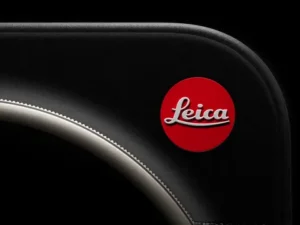The idea of Apple’s First Foldable iPhone has been floating around in tech circles for years, but recent developments suggest it may finally be within reach. Major industry moves — especially around display sourcing — hint that Apple is preparing to enter the foldable era. Below is a deeper look at the rumors, challenges, and potential impact.

Rumored Specs and Design
Probably one of the most tangible rumors is that Apple will use foldable OLED displays supplied by Samsung Display in Apple’s First Foldable iPhone. The display division at Samsung has already stated that it is in the process of providing the OLEDs to a client in North America, which is considered to be Apple. The panels under consideration belong to the 8.6-generation OLED of Samsung according to The Economic Times.
Display sources also indicate that the main inner display may be approximately 7.8 inches unfolded and the outer cover display may be approximately 5.5 inches. With regards to the hinge and construction, Apple must be trying to minimize the crease, utilize high-quality materials, and make the entire body as thin as possible. There are also rumors of a titanium alloy body or strengthened structural elements to allow foldable strength.
On the inside, it will have the next generation of the Apple SoC (e.g. A-series) with hardware optimized around the concepts of foldable form-factors. There are also rumors about an alternative to Face ID, which is Touch ID, maybe because of engineering limitations on foldable form factors this is stated by scanx.trade.
Durability Concerns
Foldables have always had to wrestle with durability. The creasing issue — where the fold line becomes visible or loses responsiveness over time — is a well-known hurdle. Apple reportedly aims to minimize or nearly eliminate that crease to meet its polished standards. (heise online)
Another concern is the hinge mechanism. It must withstand repeated folding cycles over years, resist dust and debris, and maintain tight tolerances. Apple will likely invest heavily in hinge design to avoid the reliability problems seen in earlier foldable phones.
Battery placement and structural rigidity also pose challenges. Unlike a flat slab phone, foldables must pack batteries on both sides (or find clever internal layouts) while maintaining balance and strength in the frame.
Finally, repairability and long-term wear are major worries. Foldable panels are more expensive to replace than regular OLEDs, and internal flex cables, hinges, and mechanical parts present more failure points.
Price Expectations
Due to the intricacy, which includes sophisticated screen, hinge construction, exclusive material, Apple’s First Foldable iPhone will undoubtedly be sold at a premium price. Leaks which have started give an estimate of a starting price of $2,000 to $2,500. (scanx.trade). It is also argued by others that Apple may only sell a limited number of first run iPhones, maybe only a couple of million, to see how demand would be at that price.
Apple will also be pressured even at that premium. There are already foldable phones in the market by competitors such as Samsung, Google, and so on, and Apple needs to have a reason to charge fellow users.
Market Impact & Strategy
Once the Apple’s First Foldable iPhone is released, it will probably shake up the foldable market. Through its entry, Apple can make foldables mainstream to a wider audience and compel other competing brands to increase their quality standard and reduce their margins.
It is not necessarily going to be the biggest volume seller in the beginning of Apple, the initial units should be mostly oriented at early adopters and power users. The effects of its influence may trickle down, though, to accessory makers, app developers, and repair services.
One more aspect to consider: It is possible that Apple markets this foldable as a high-end offering over and above the Pro or Max line, instead of a middle-of-the-line novelty. That would enable Apple to maintain its brand prestige and progressively increase the use of folds.
The other strategic factor is supply chain control. Apple strikes an established flexible display vendor by incorporating Samsung Display as the primary provider of the foldable OLEDs. (The Economic Times) The partnership also provides Apple with some bargaining power in terms of quality and quantity as it ramps up.
What This Means for You
If you’re waiting to upgrade, the rumors suggest that Apple’s First Foldable iPhone is a compelling option — but not without risk. The price will be high, and early versions may have hidden compromises (durability, battery life, software optimization). If your current iPhone is still solid, you might wait until the second generation for better refinements.
But if you’re an early adopter who values innovation, camera quality, and Apple integration, the launch of a foldable iPhone could be exactly what you’re waiting for.
When Apple officially confirms it, I can help break down the real vs. rumor specs side by side, to help your audience decide whether to jump in or wait.
Source(s.)




